In August 2022 we visited Naples, and took a day trip to the almost absurdly beautiful island of Procida. I took a couple of hundred photographs – here are a few of them.
Procida is one of the islands in the Bay of Naples, of which the largest is Ischia and the most famous is Capri.
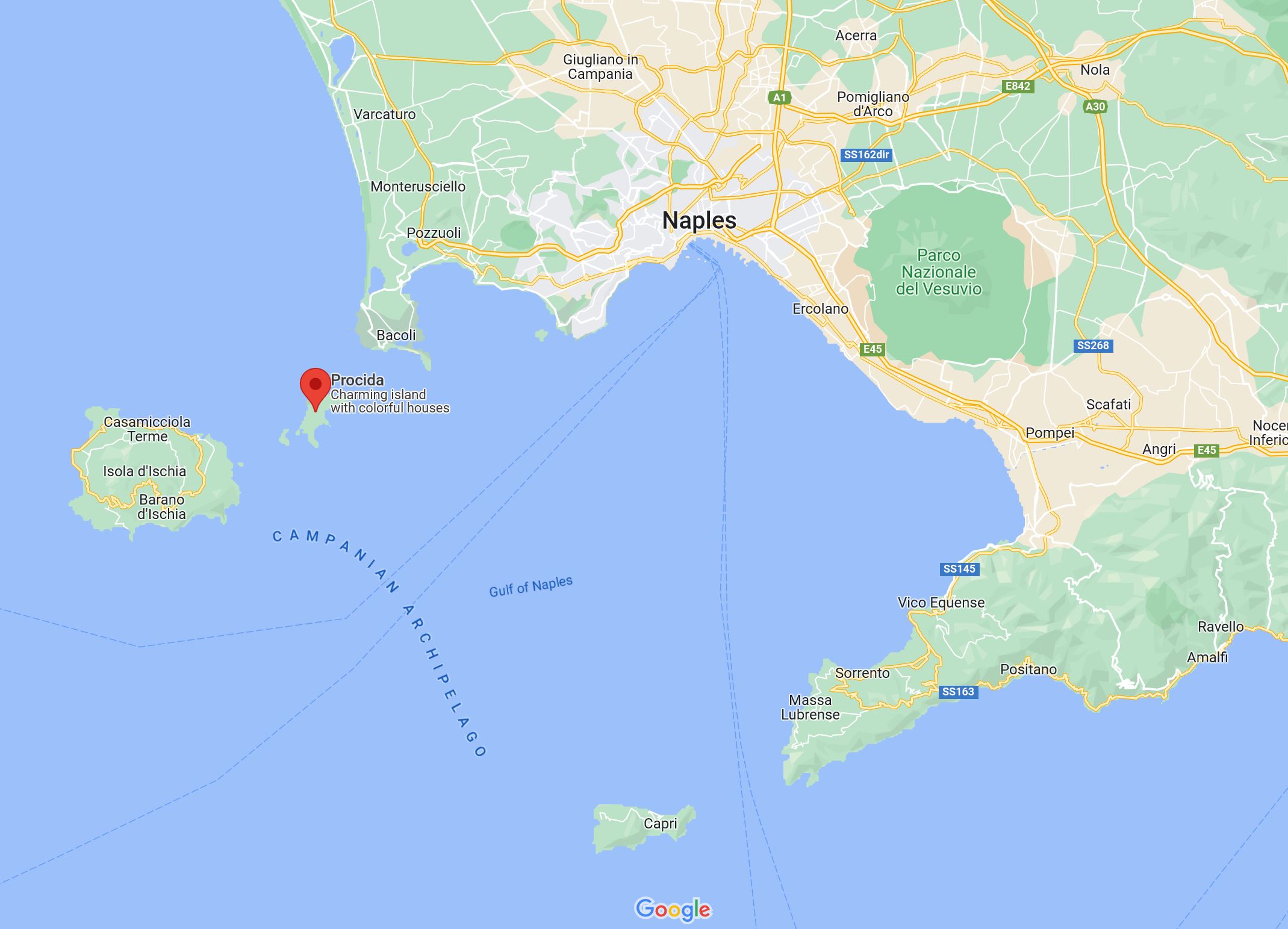
A Brief History
Like pretty much every other geographical feature around Naples, Procida is the product of volcanic activity. Apparently it is made up of four volcanoes, all now dormant. Human settlement on the island is very ancient, with some Mycenaean Greek artefacts (ie from around 1500 BC) having been found there, and Hellenic Greek settlements from the period of colonisation a few hundred years later. The Greeks of Magna Graecia were famously bellicose and the steep-sided hill at the eastern end of the island would have made an attractive defensive position.
The ancient Romans, like us, could afford to think about enjoying themselves rather than worrying about being invaded. And so just like us they had a good eye for real estate locations, and in classical times Procida was a popular place for wealthy people to build luxurious villas.
Good defences became important again in the Middle Ages, with Saracen raids, then a succession of wars as various dynasties fought over Naples. At some point the natural defences were augmented by artificial ones, and the area within those walls became known as the Terra Murata (“walled land”). The current structure on the site dates from the early 16th Century and is known as the Castle (or Palace) of d’Avalos, after the Spanish cardinal who had it built. In Bourbon times it became a prison, and continued to be used as such until the 1980s, housing a few notorious mafiosi.
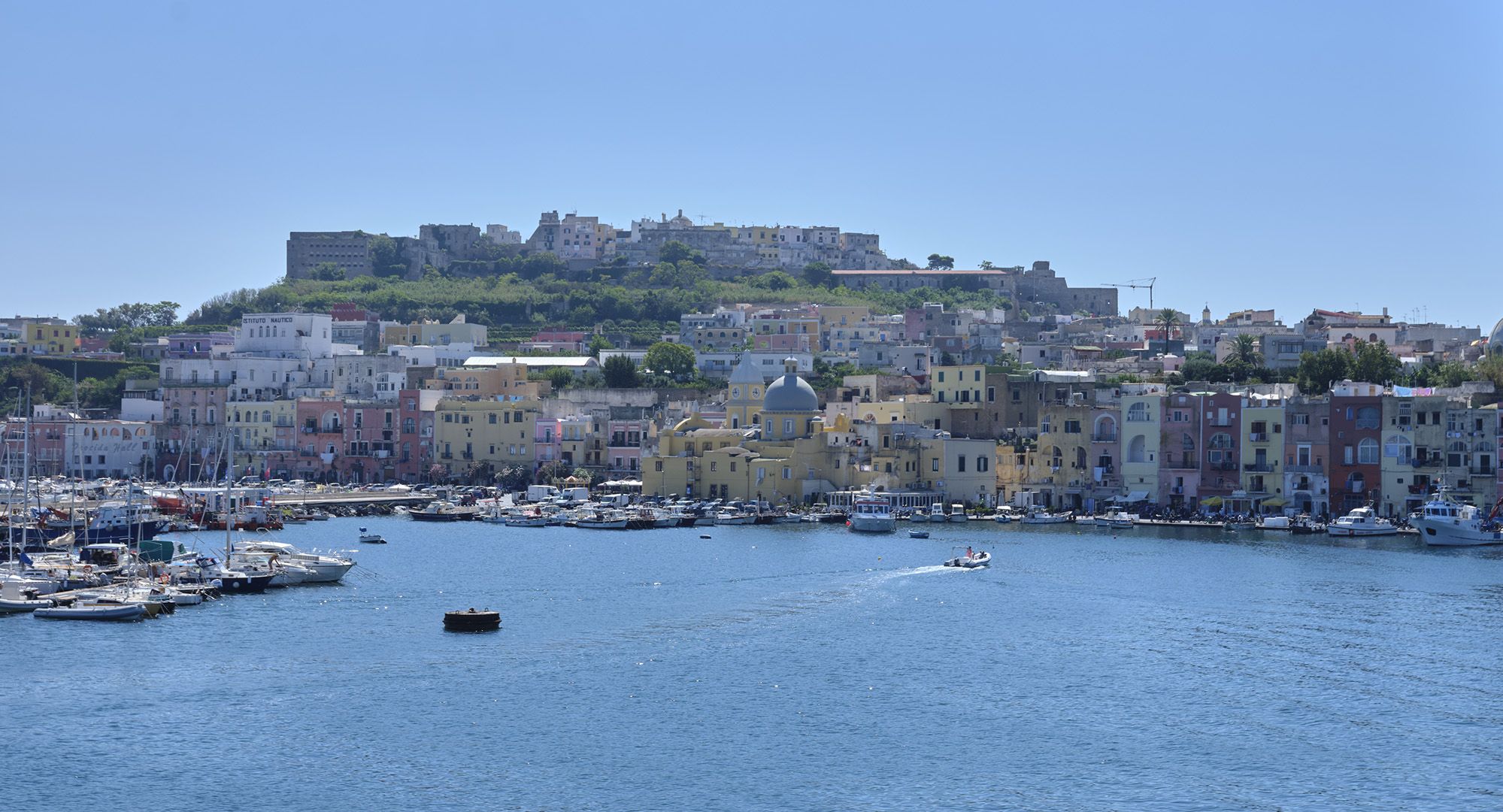
Procida Now
These days Procida is a bustling place, especially around the port, but was hardly overrun when we visited in late August. This may partly be because non-residents may not bring cars to the island for most of the year, but I believe that it is also Procida’s good fortune that a majority of tourists opt to stay on the ferry and keep going to Ischia. And it was only the first post-COVID tourist season.
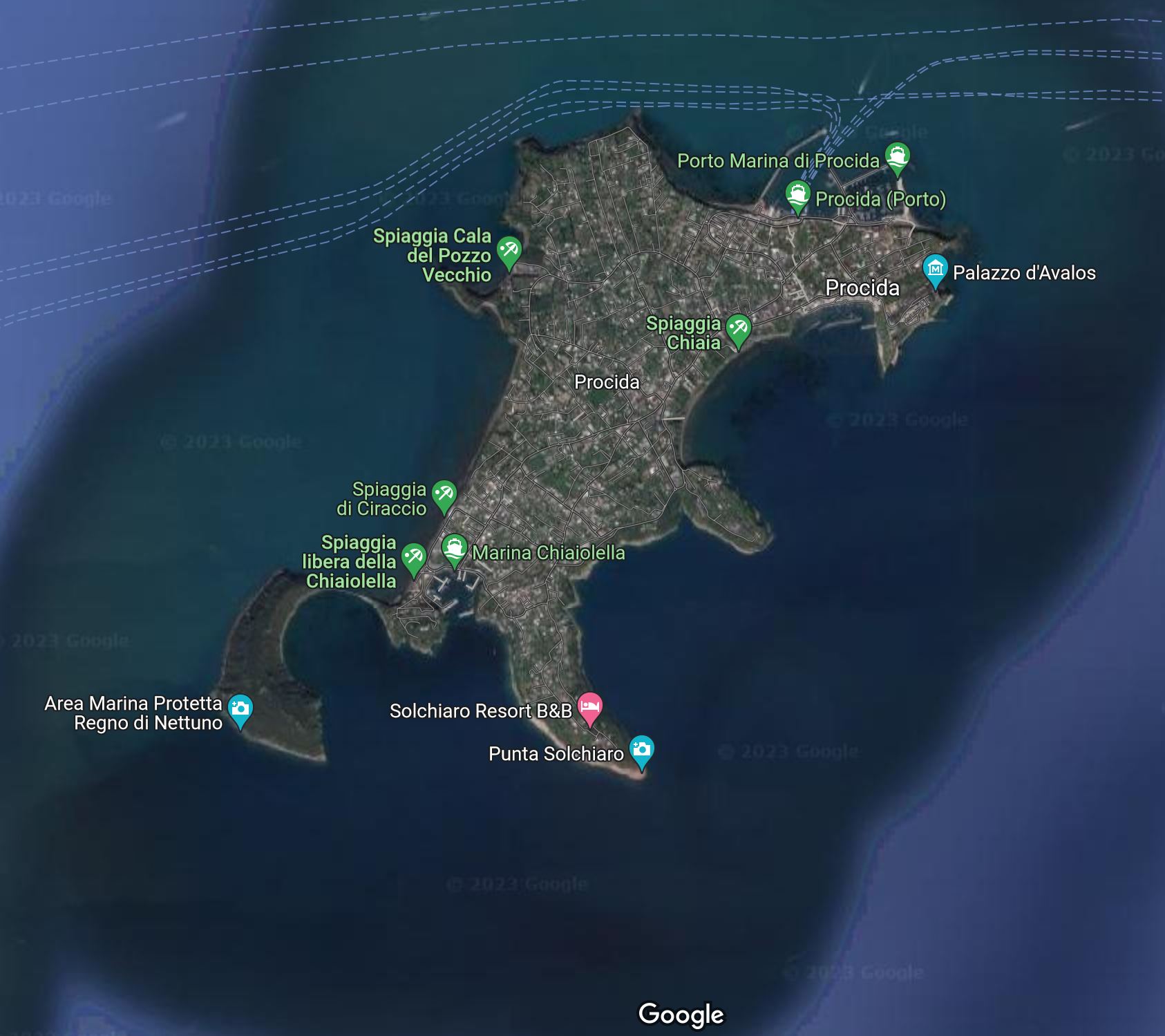
The main town of Procida covers the eastern end of the island, and the distinguishing feature of the place is that the houses are rendered in plaster and then painted in pastel colours. The streets around the port are lined with tall narrow houses which give the impression of being densely-populated, but behind the houses there are many open spaces with what appear to be fruit and vegetable gardens.
Not surprisingly Procida has been used as a location for quite a few films including The Talented Mr Ripley, but to Italians and italophiles the most famous is Il Postino (“The Postman”).
Getting There
There are ferry and hydrofoil services to Procida and Ischia from a couple of locations. We were staying in downtown Naples, so decided to catch a ferry from the main terminal. I tried to google information on tickets and schedules, but as is the way with Google these days, I just got pages of sponsored advertisements, so we decided just to turn up to the terminal. Taxis are cheap and plentiful in Naples, and the best way to get around, so we caught one.
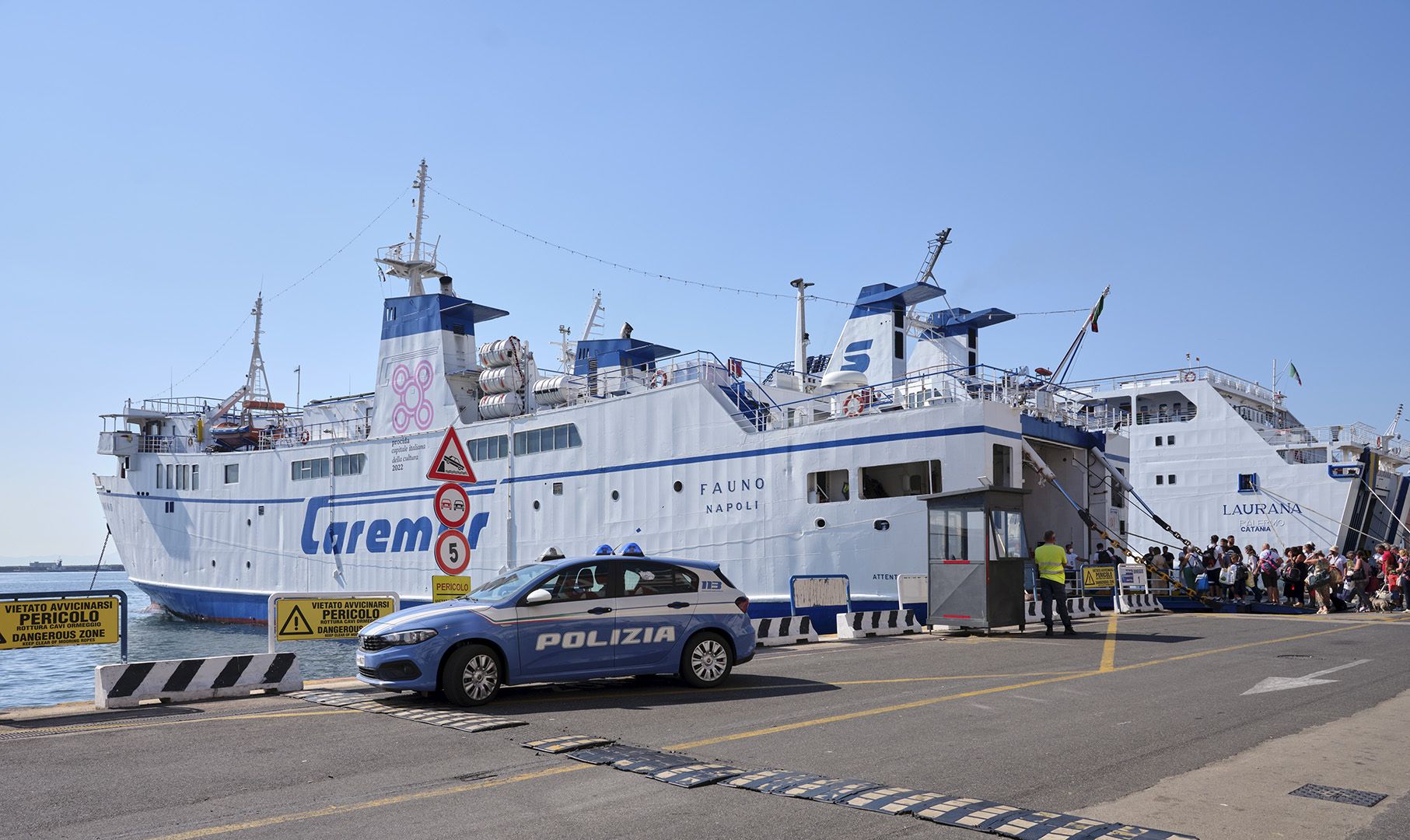
Once at the terminal we established that there was a ferry departing shortly, and that the queue to buy tickets was short and moving quickly. It also appeared that even if we had managed to book online, we would still have had to queue to get a paper ticket. A couple ahead of us when boarding the ferry found this out the hard way as despite having evidence of the purchase on their phones, they were sent back to the ticket office to get a proper paper ticket. Italy still doesn’t entirely “get” the internet.
We caught the ferry there and the hydrofoil back. The hydrofoil is not all that much more expensive than the ferry, but takes about half the time. However one has to sit downstairs with very little outside visibility, while on the ferry you can wander around on deck. So we would definitely recommend taking the ferry in at least one direction, for the views.
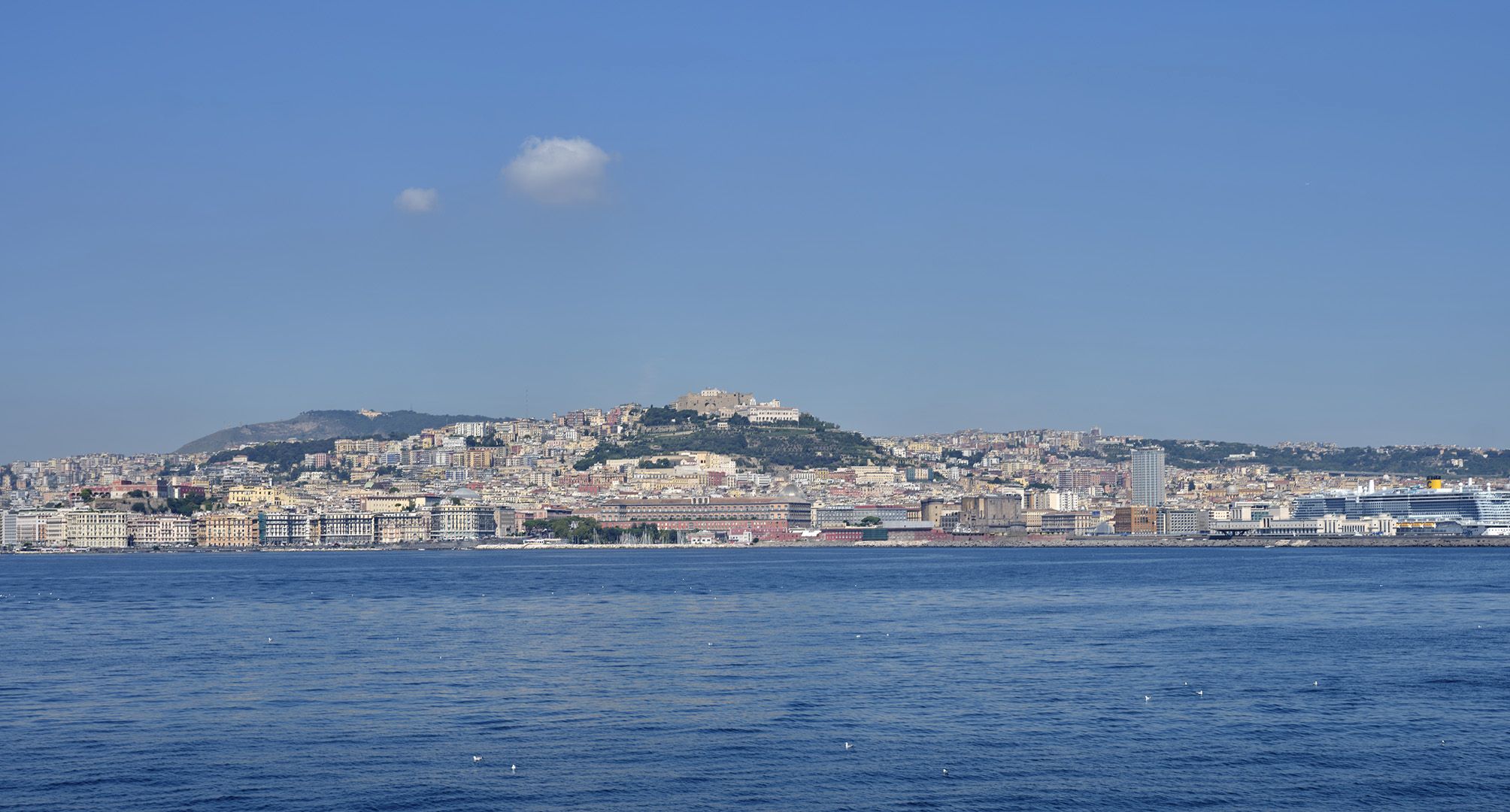
Of views, there are many – Naples as you leave, then along the northern edge of the Bay of Naples. Our fellow passengers seemed to be mainly locals – either Neapolitans out for a day trip or Procidans and Ischians returning from a shopping trip. There were a few foreign tourists, but perhaps not as many as there would have been before the pandemic.
On Procida
We got off the ferry in the port of Procida which is on the northern side of the island. There are plenty of mini-taxis and bike rentals which can help you get further afield, but we chose to stay on foot and climb up to the Terra Murata, then descend to the little fishing port of Corricella on the southern side, now a marina.
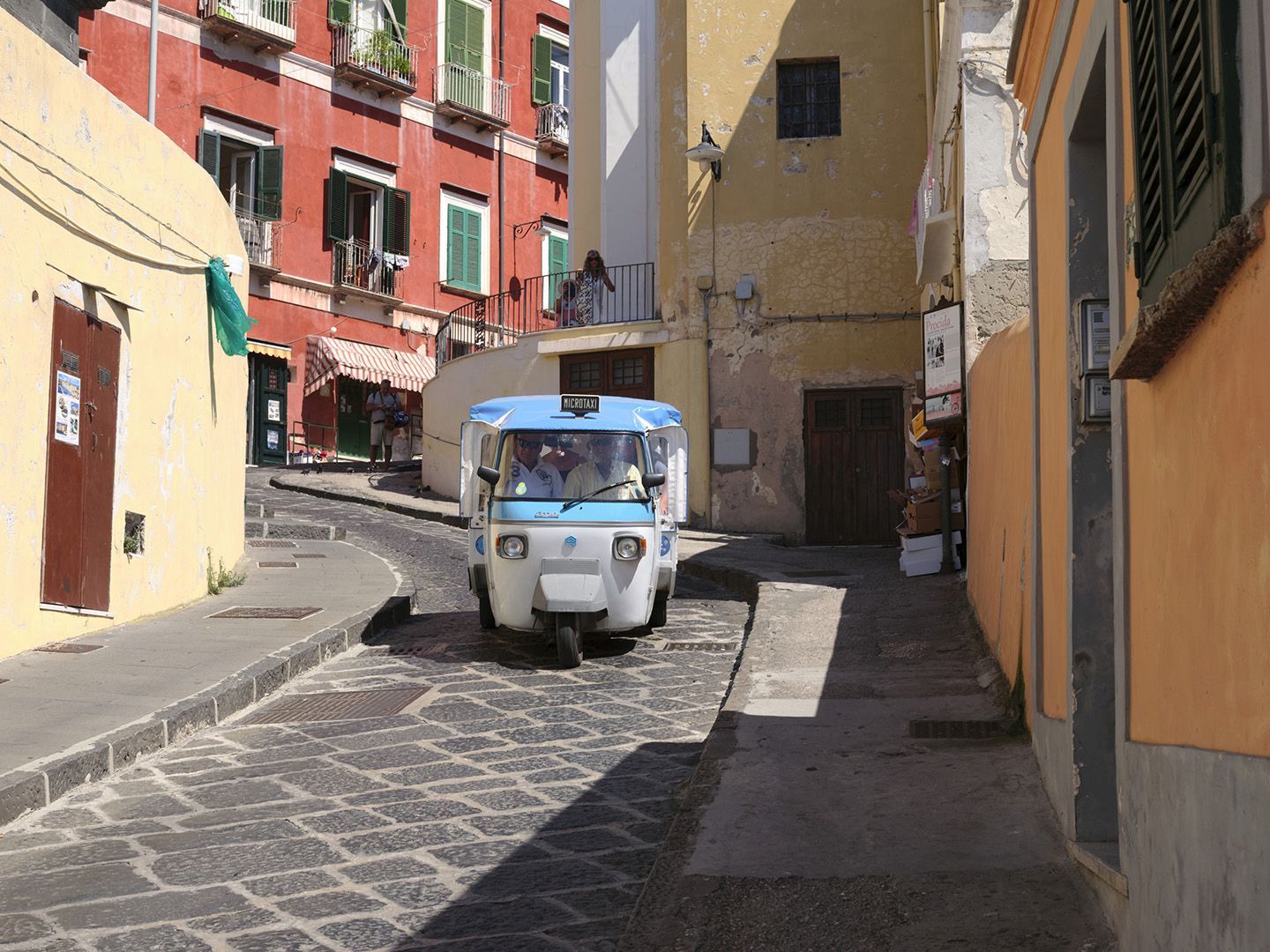
The main road up the hill towards the Terra Murata is called “Via Principe Umberto” after the son of King Vittorio Emmanuele. After the 1946 referendum which abolished the monarchy, parts of central and northern Italy renamed at least some of the streets and piazzas which had commemorated members of the House of Savoy. That this happened less in the south reminds us that in these parts the vote was actually in favour of retaining the monarchy. I can’t imagine that this was out of great affection – the Piemontese royal house was alien to the South and had ruled united Italy for less than a century. I have not seen this discussed much in Italy, but I would speculate that it was more from deep conservatism and scepticism that the Republic would actually improve conditions in the south. Did it? Who can say?
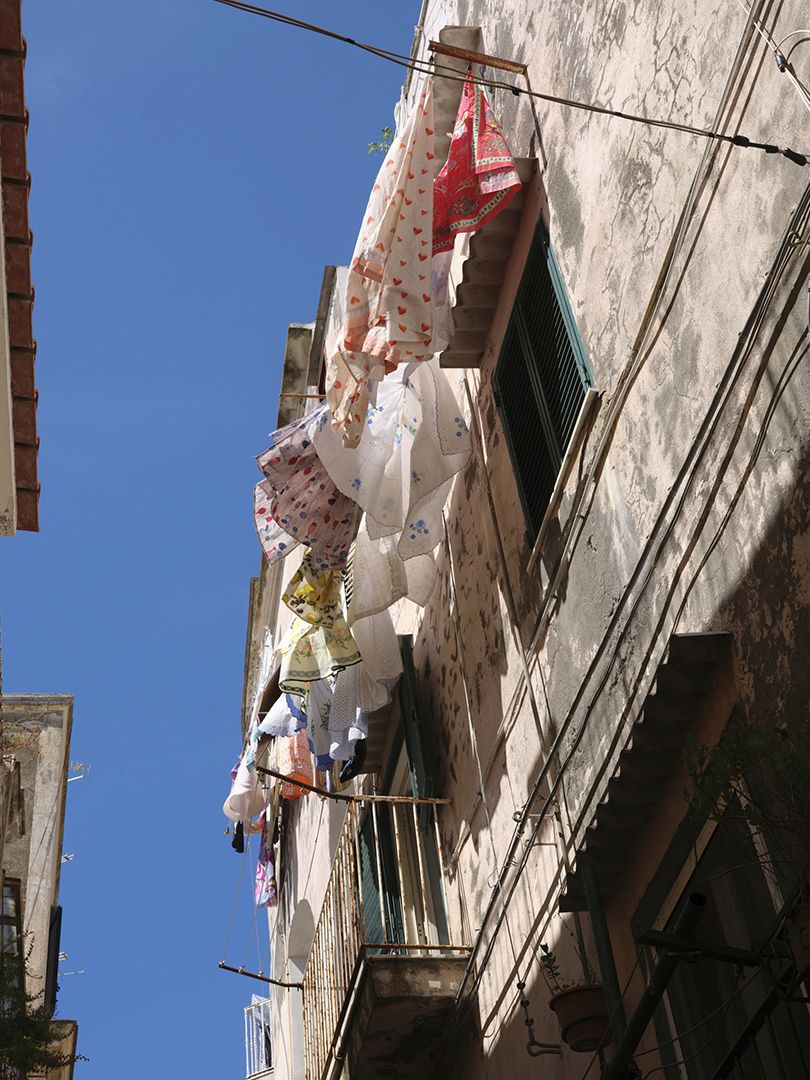
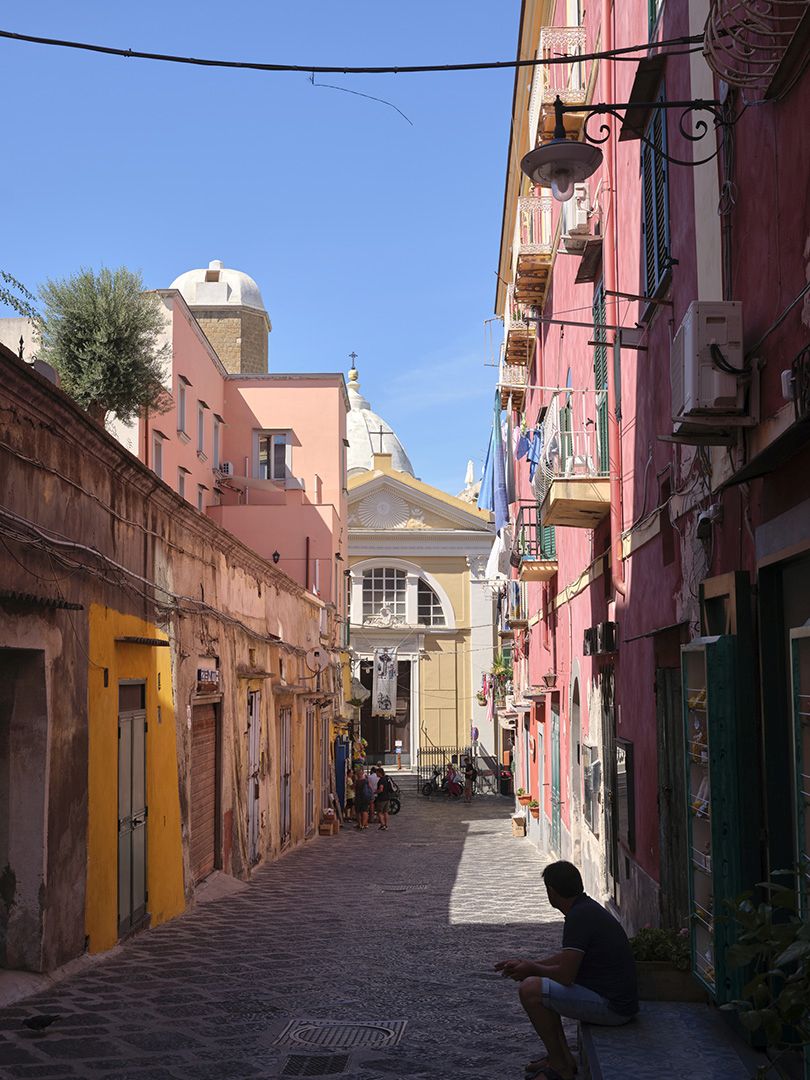
The view down towards Corricella from just outside the fortress is well worth the climb, and features in many a calendar and postcard.
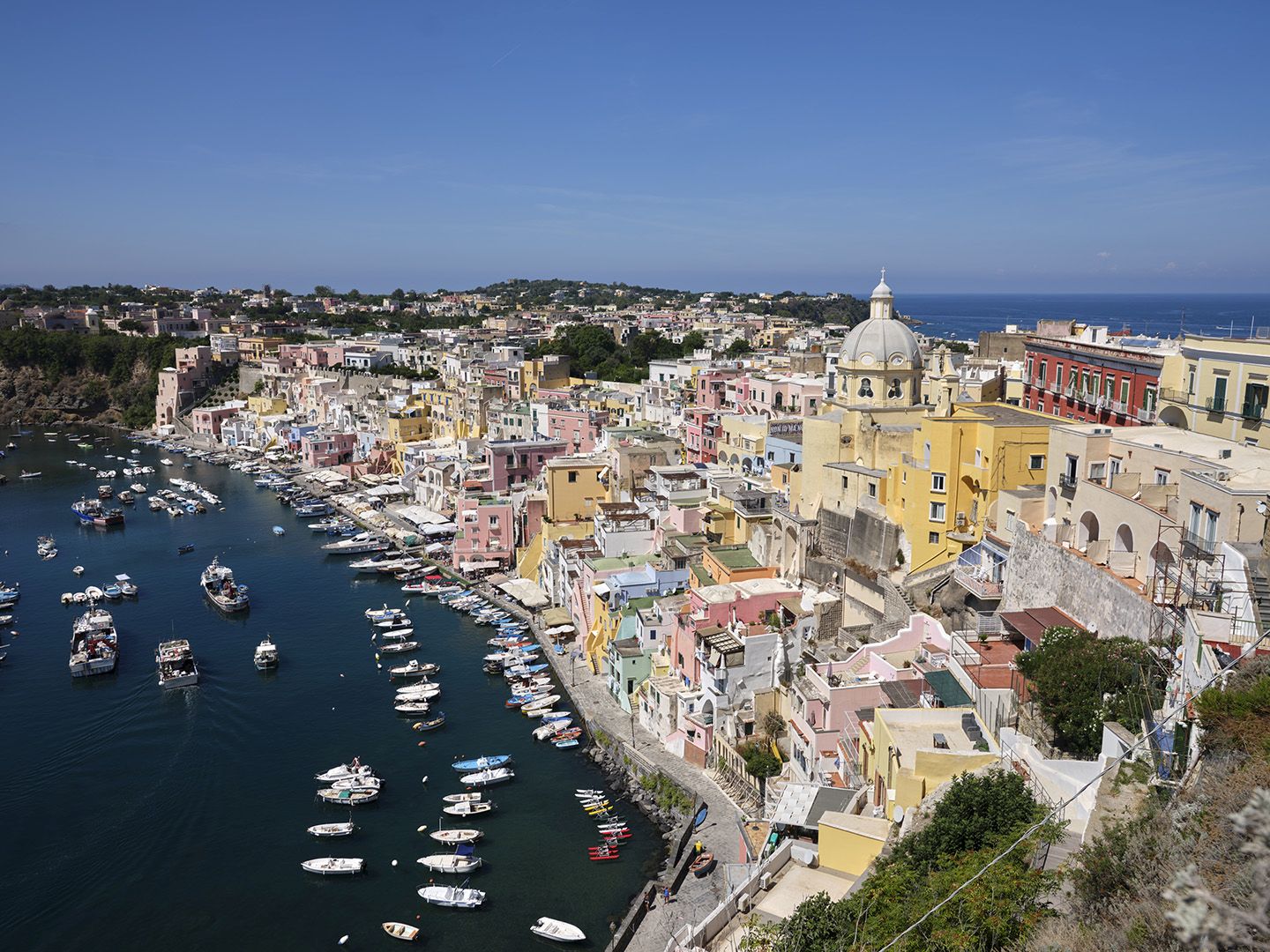
Once down at sea level again, there is a very pleasant walk along the waterfront of Corricella, where the only challenge is choosing a seafood restaurant in which you might have lunch.
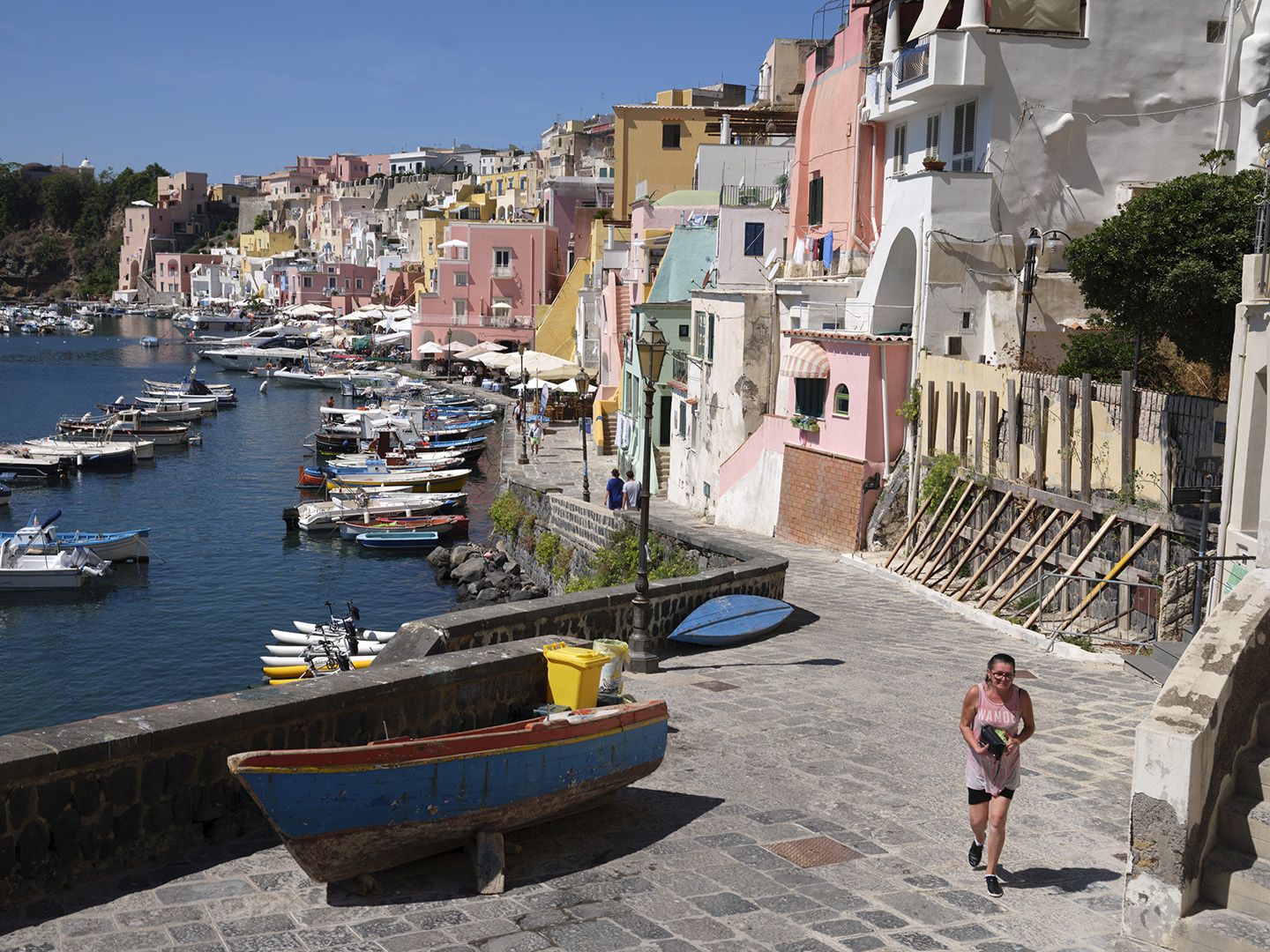
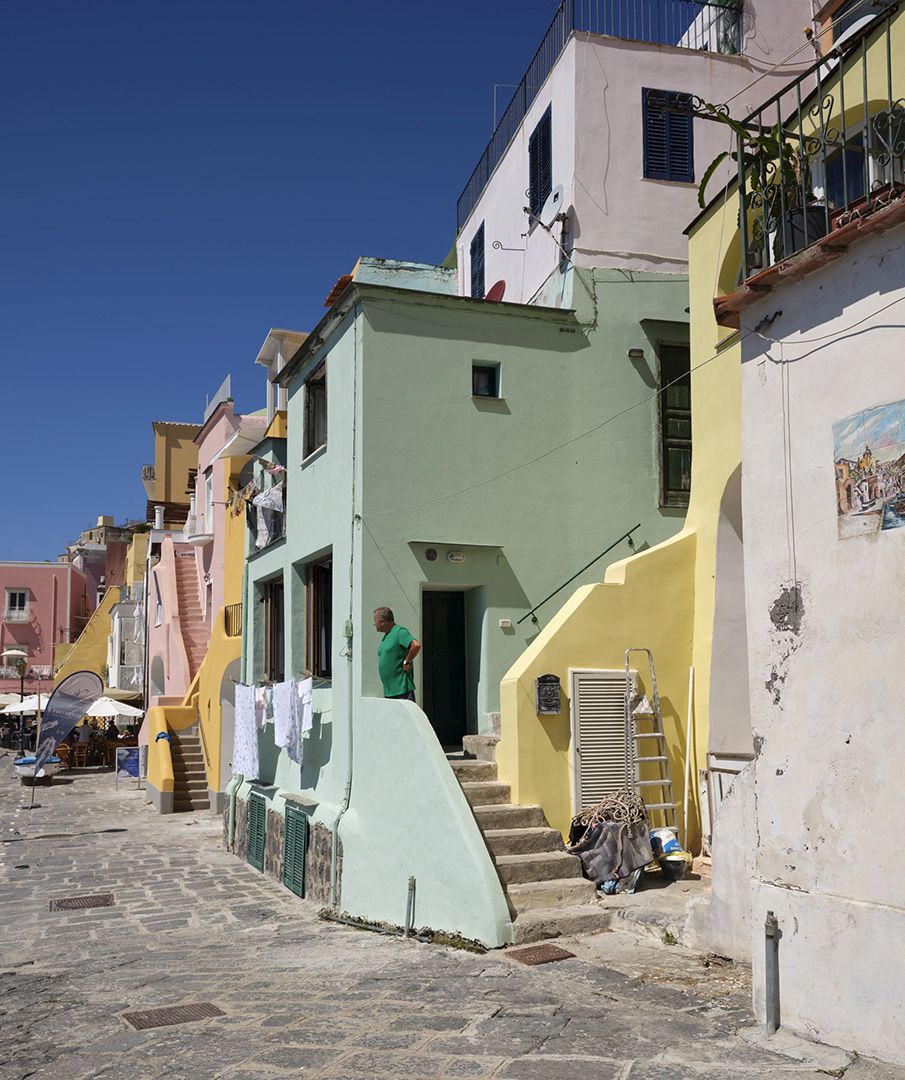
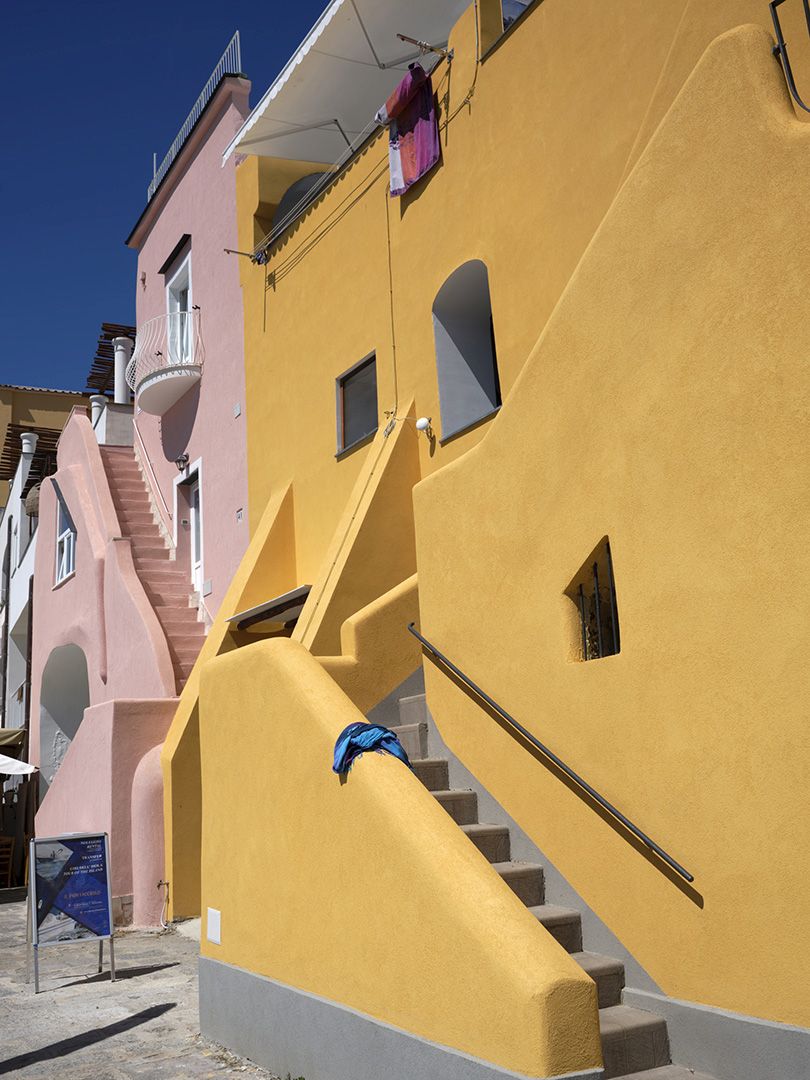
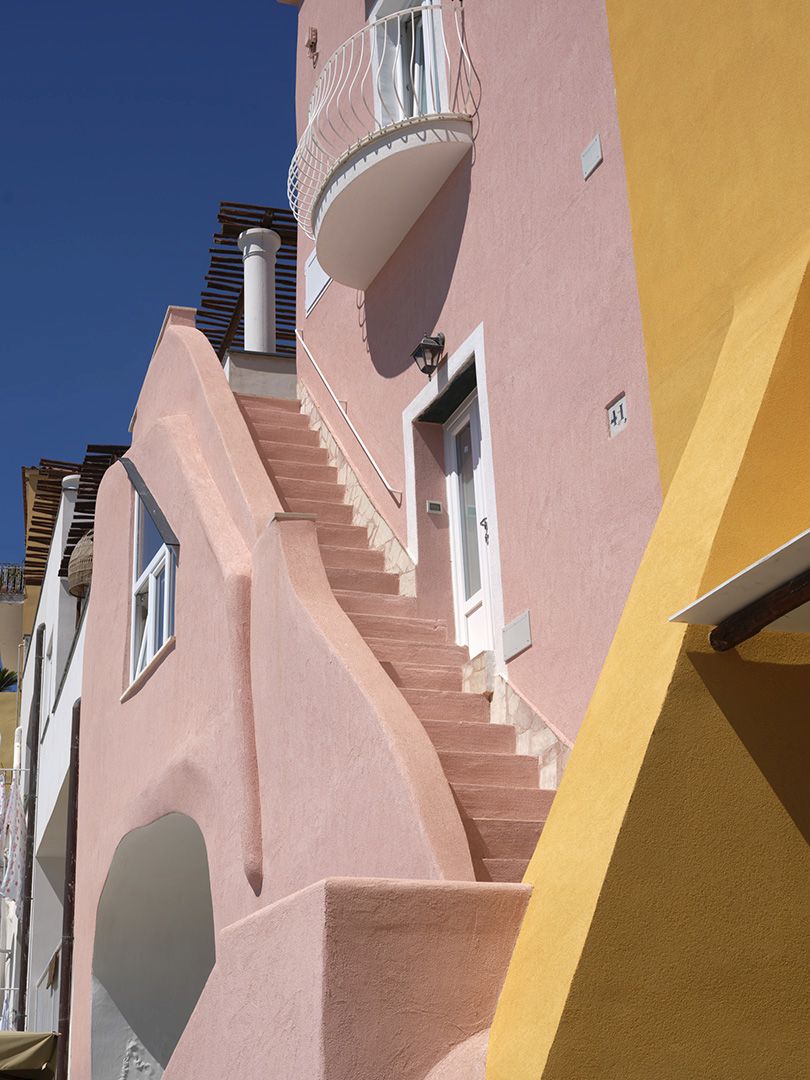
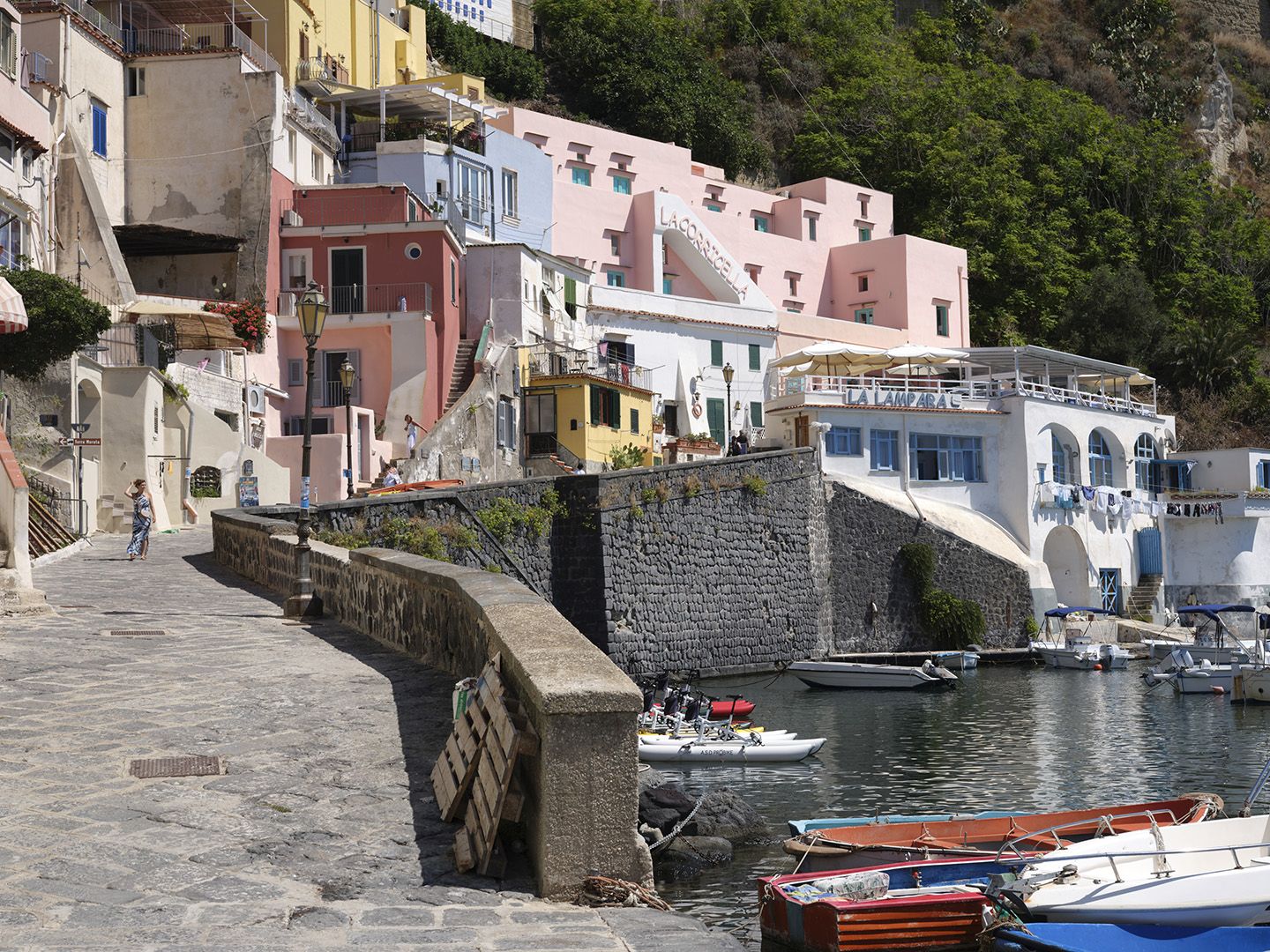
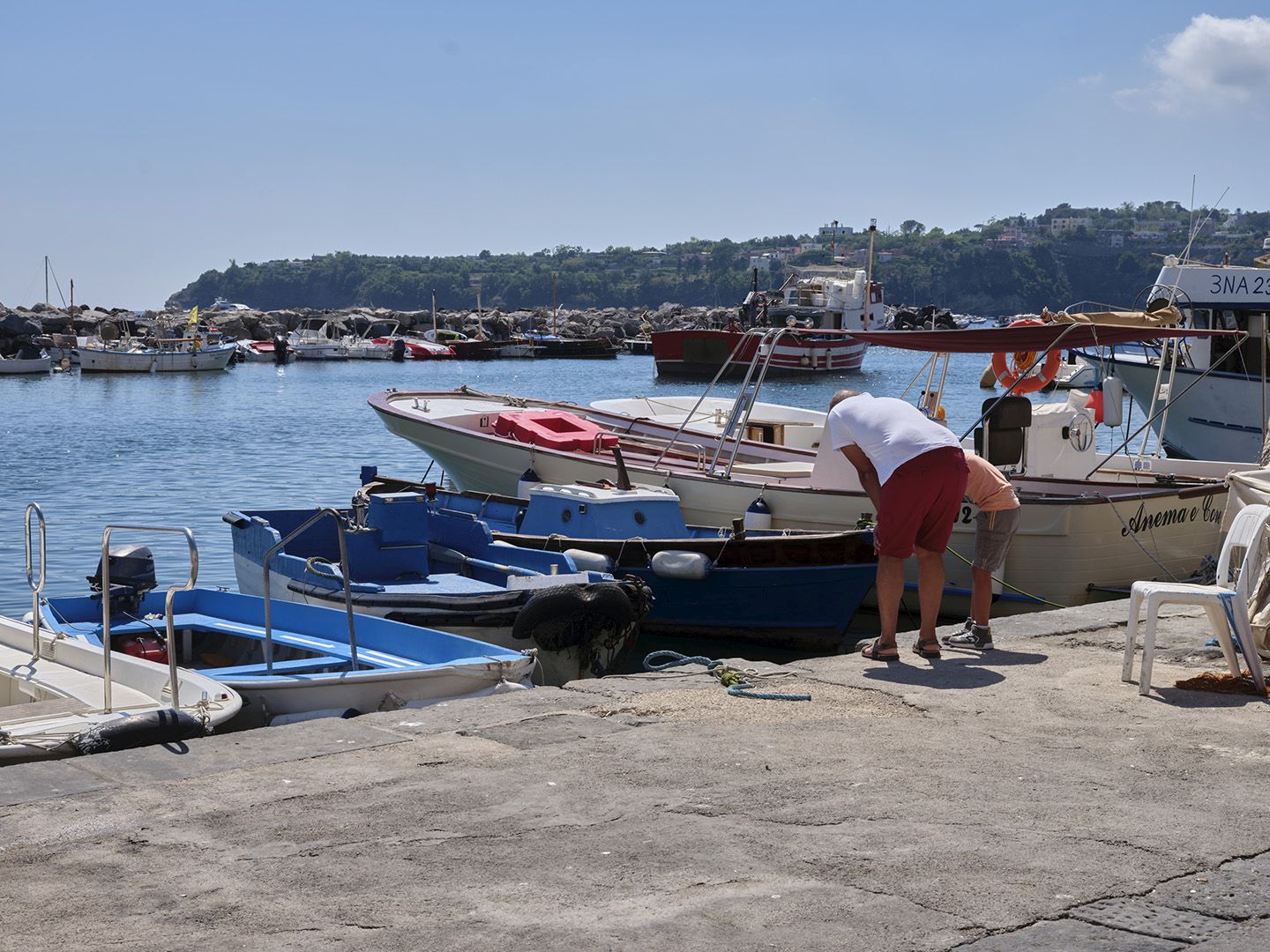
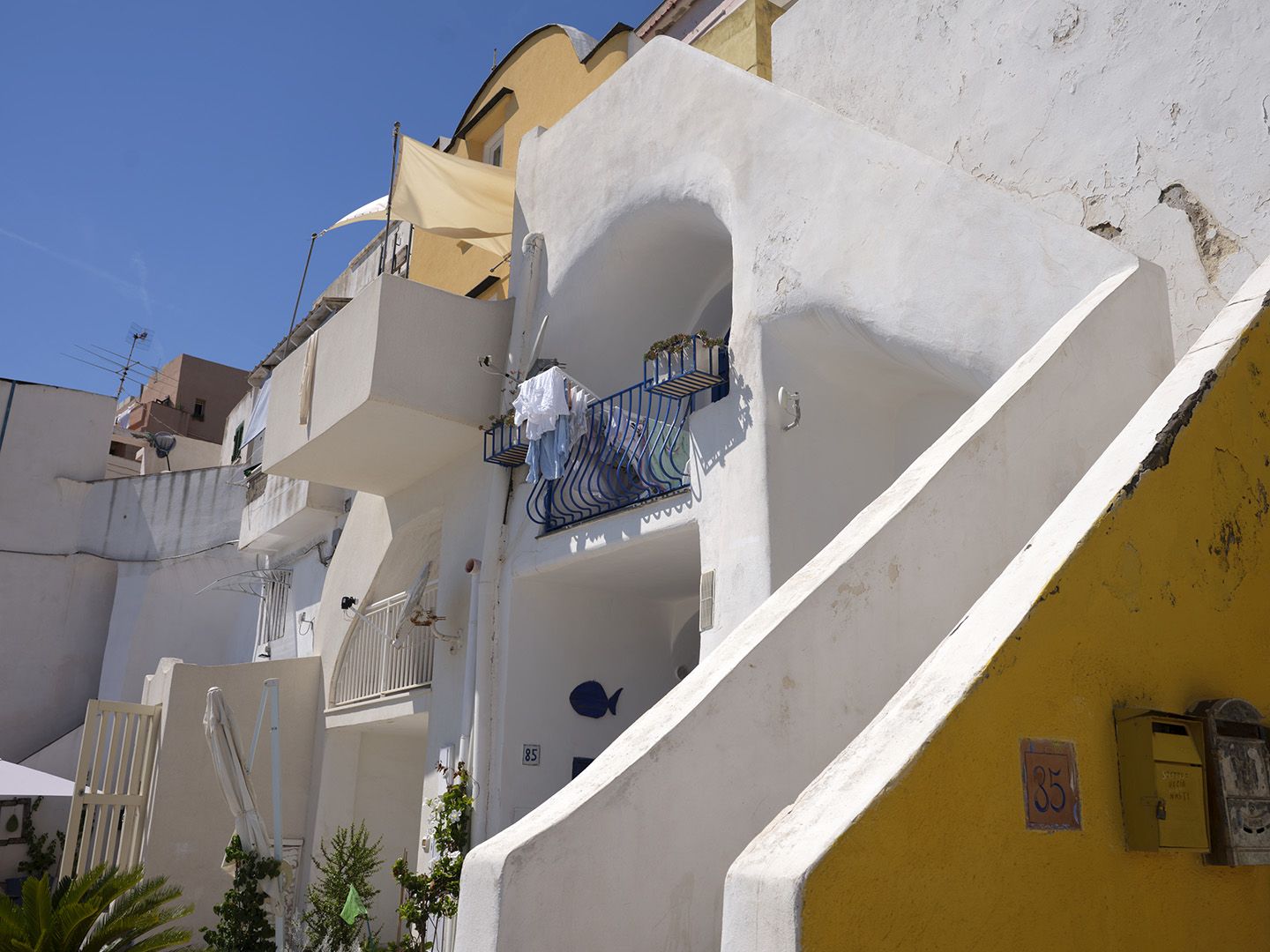
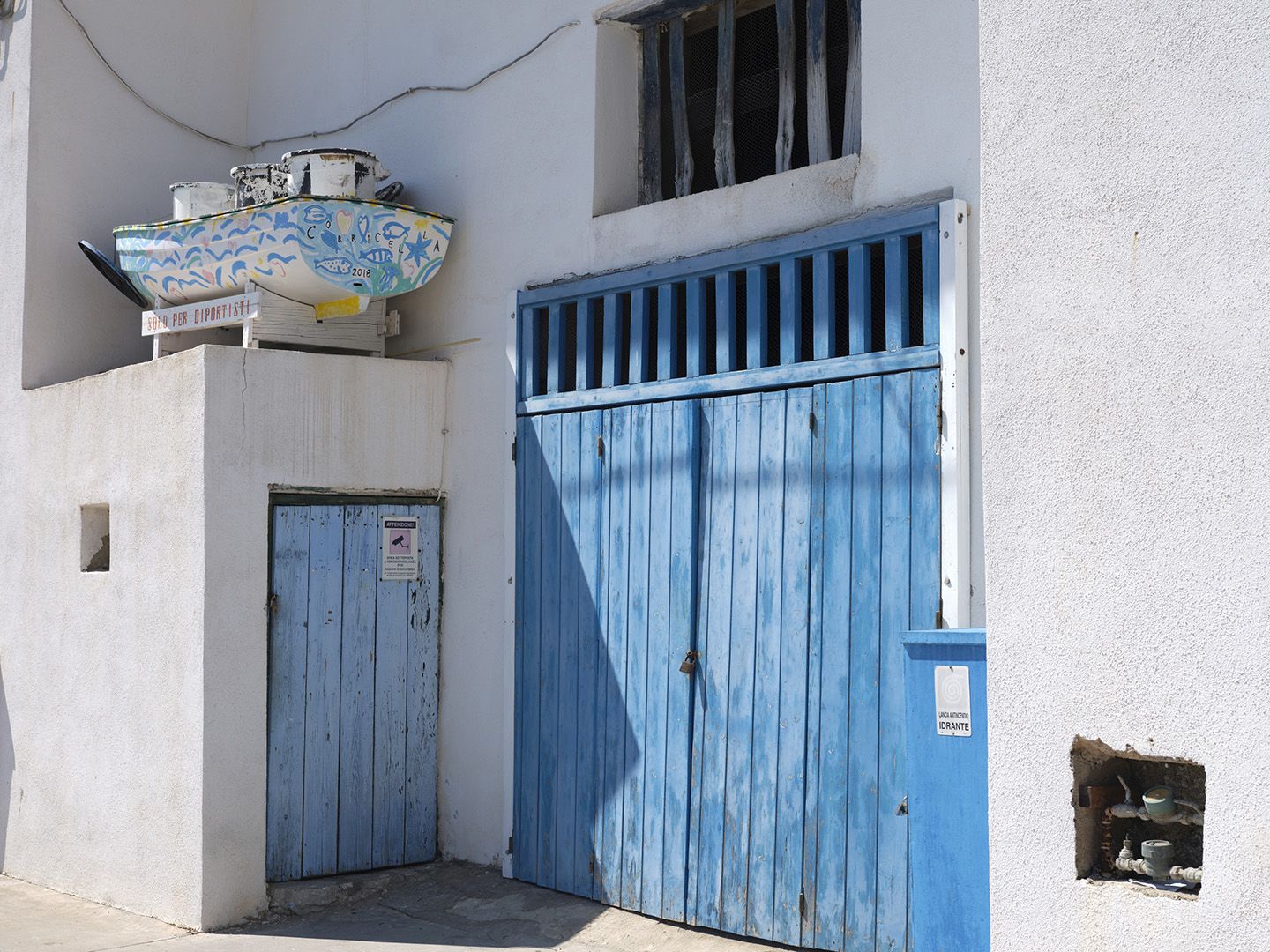
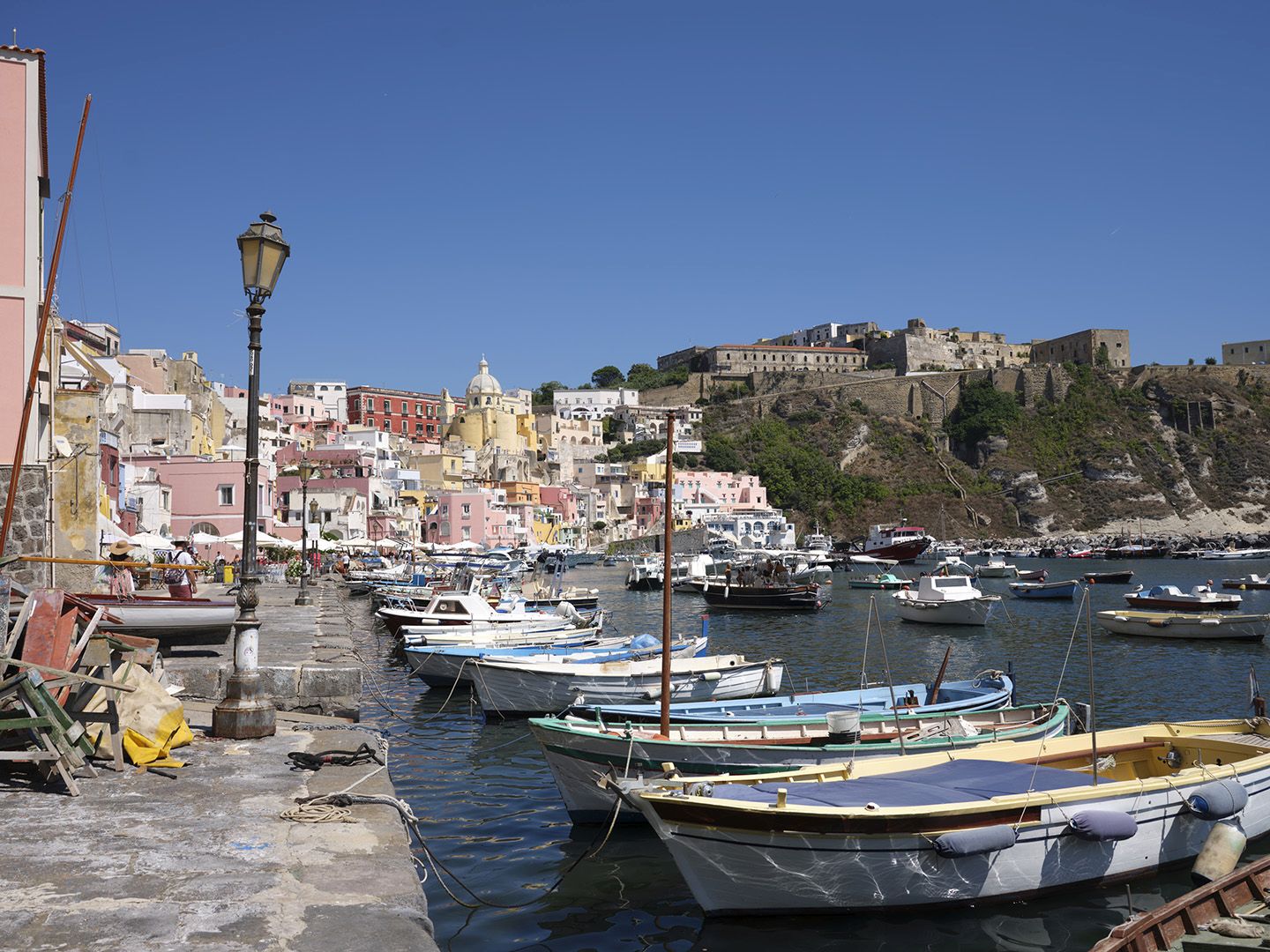
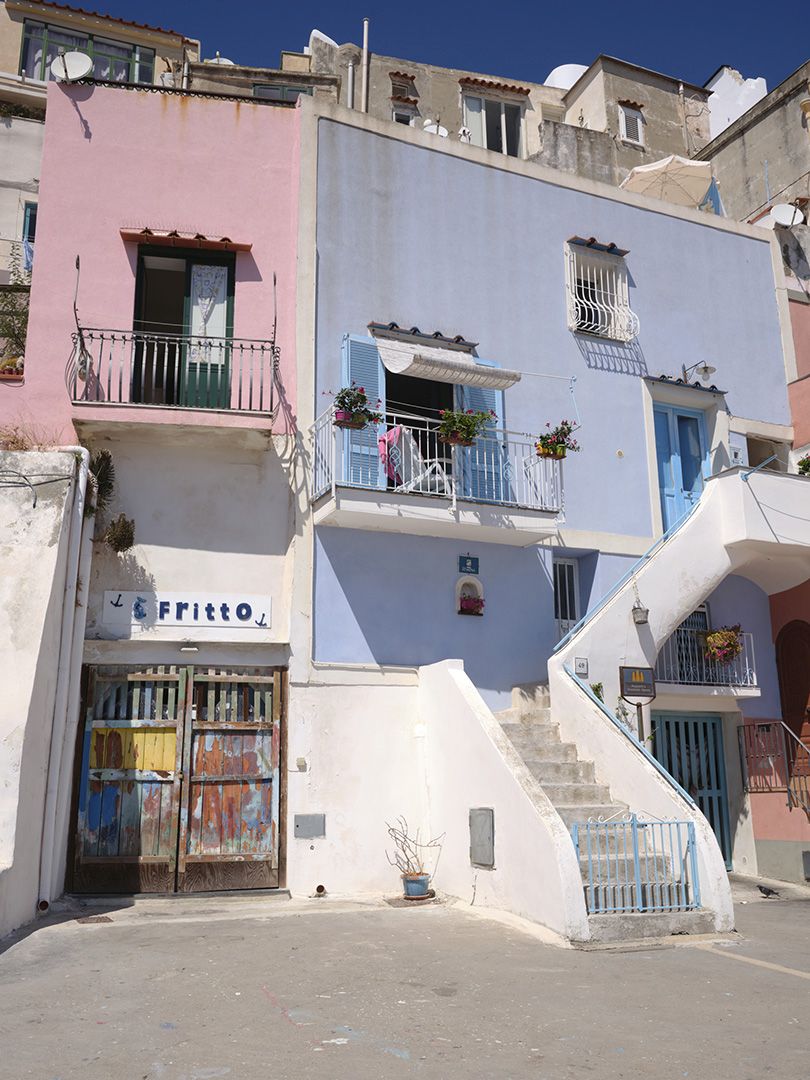
After gorging on the photographic opportunities in Corricella, the way back is via a steep narrow road called the Discesa Graziella, which continues to offer lots of good photographs.
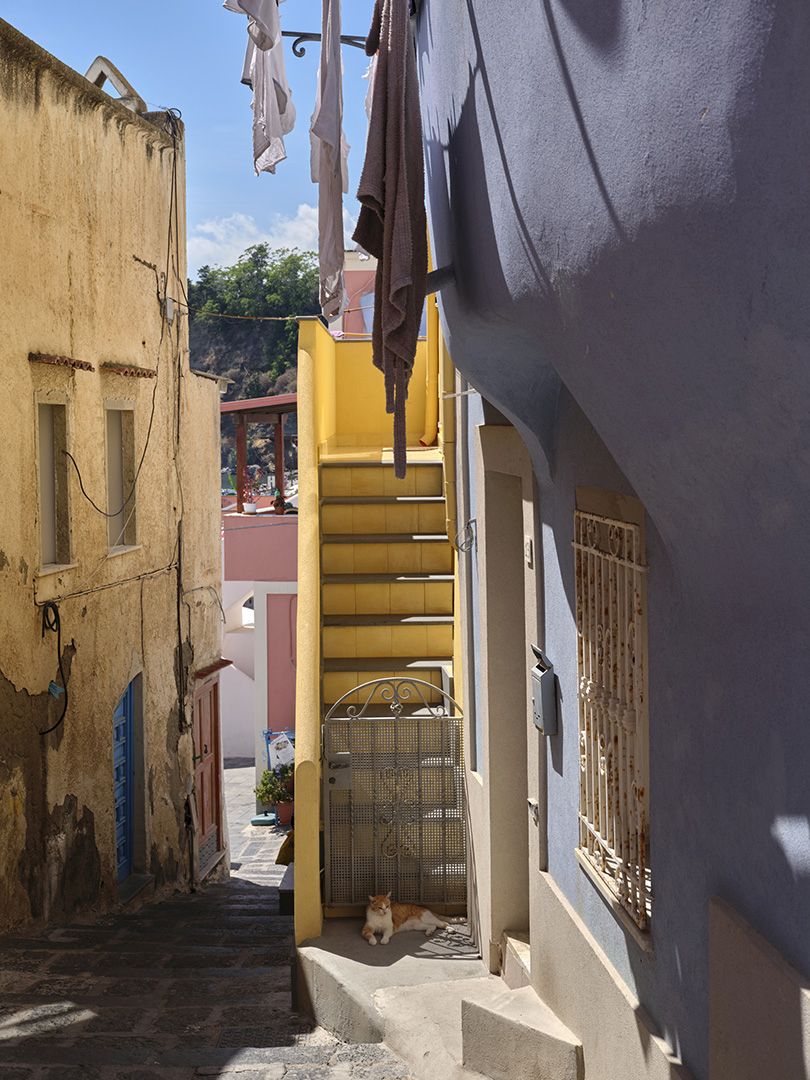
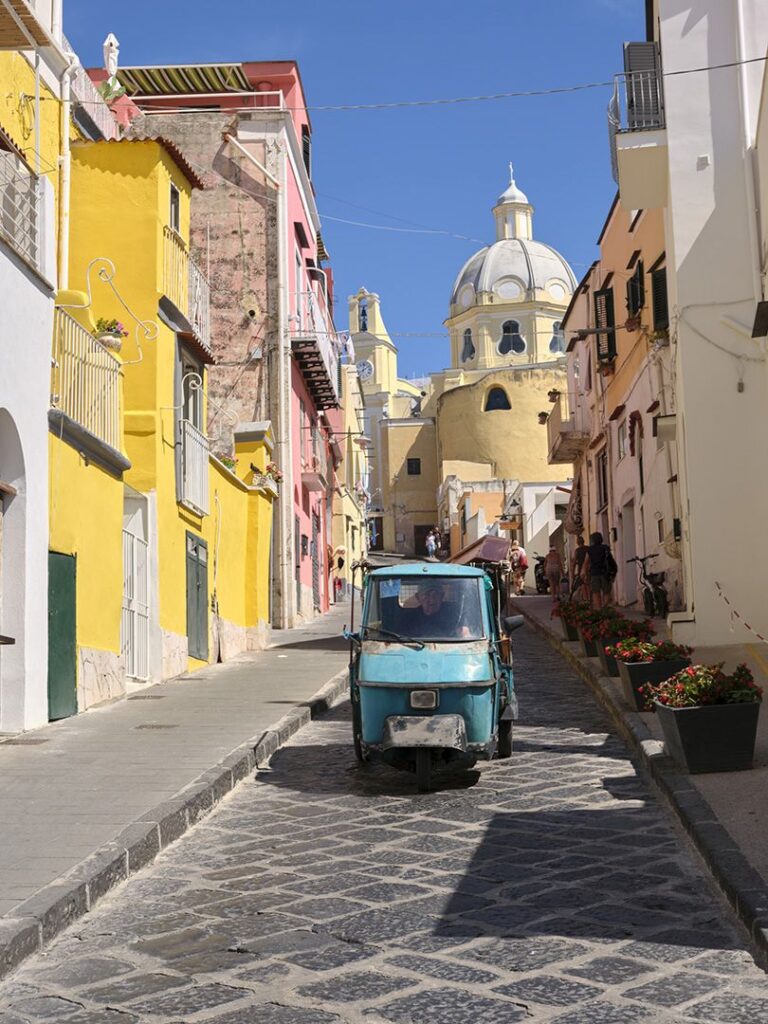
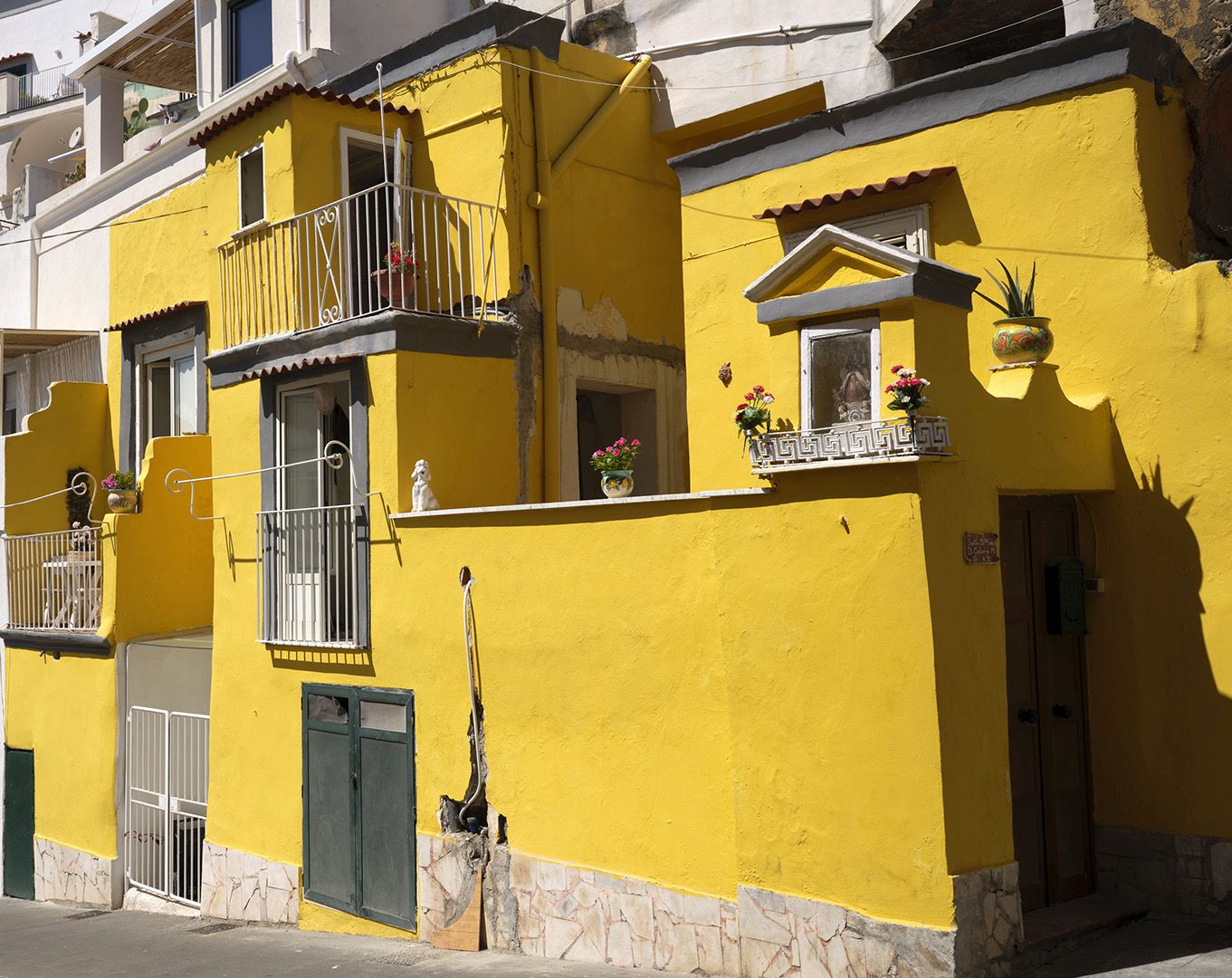
statue of a poodle. Fujifilm GFX 50R camera, Fujifilm GF32-64mm R LM WR lens (click to enlarge).
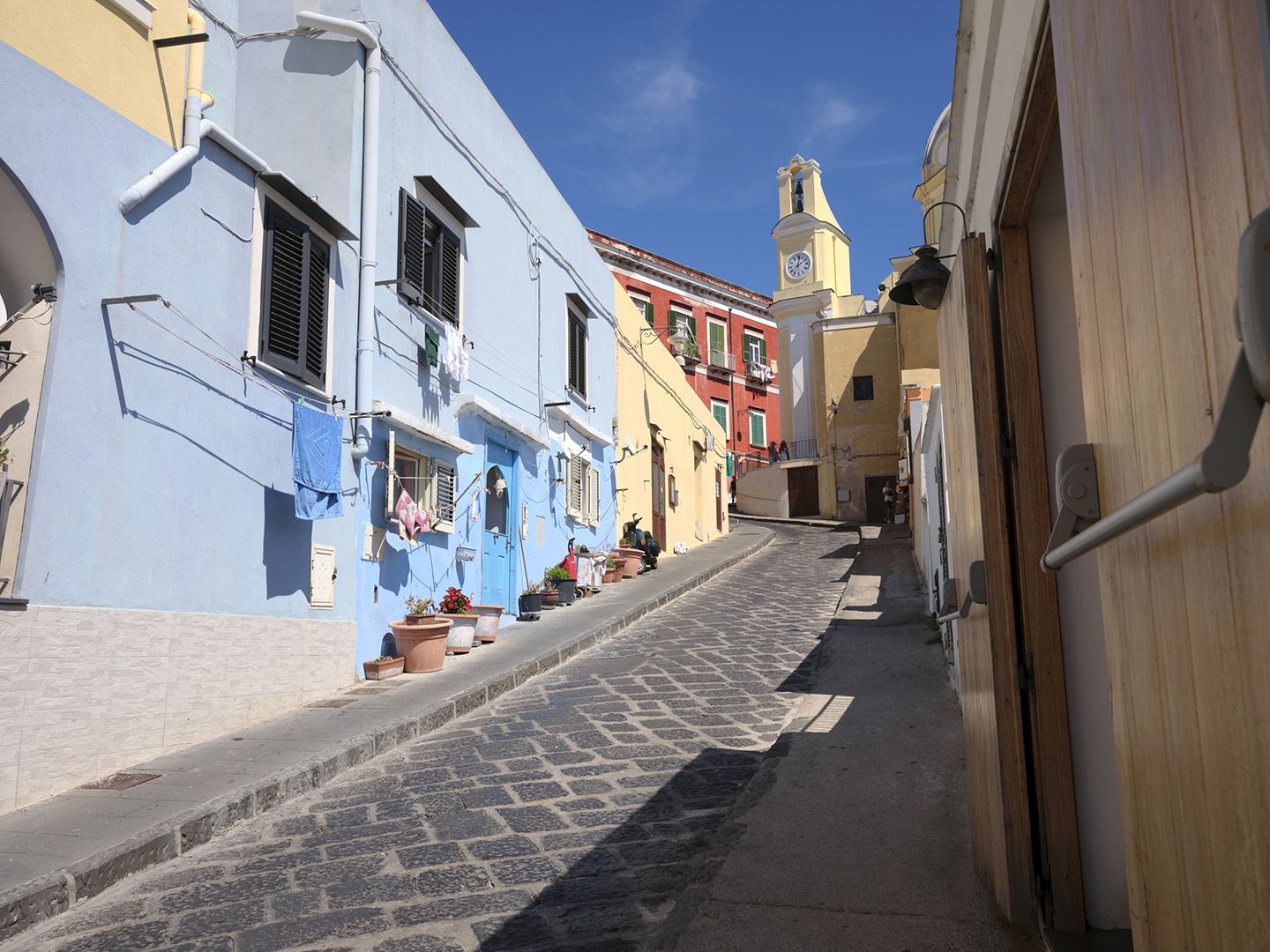

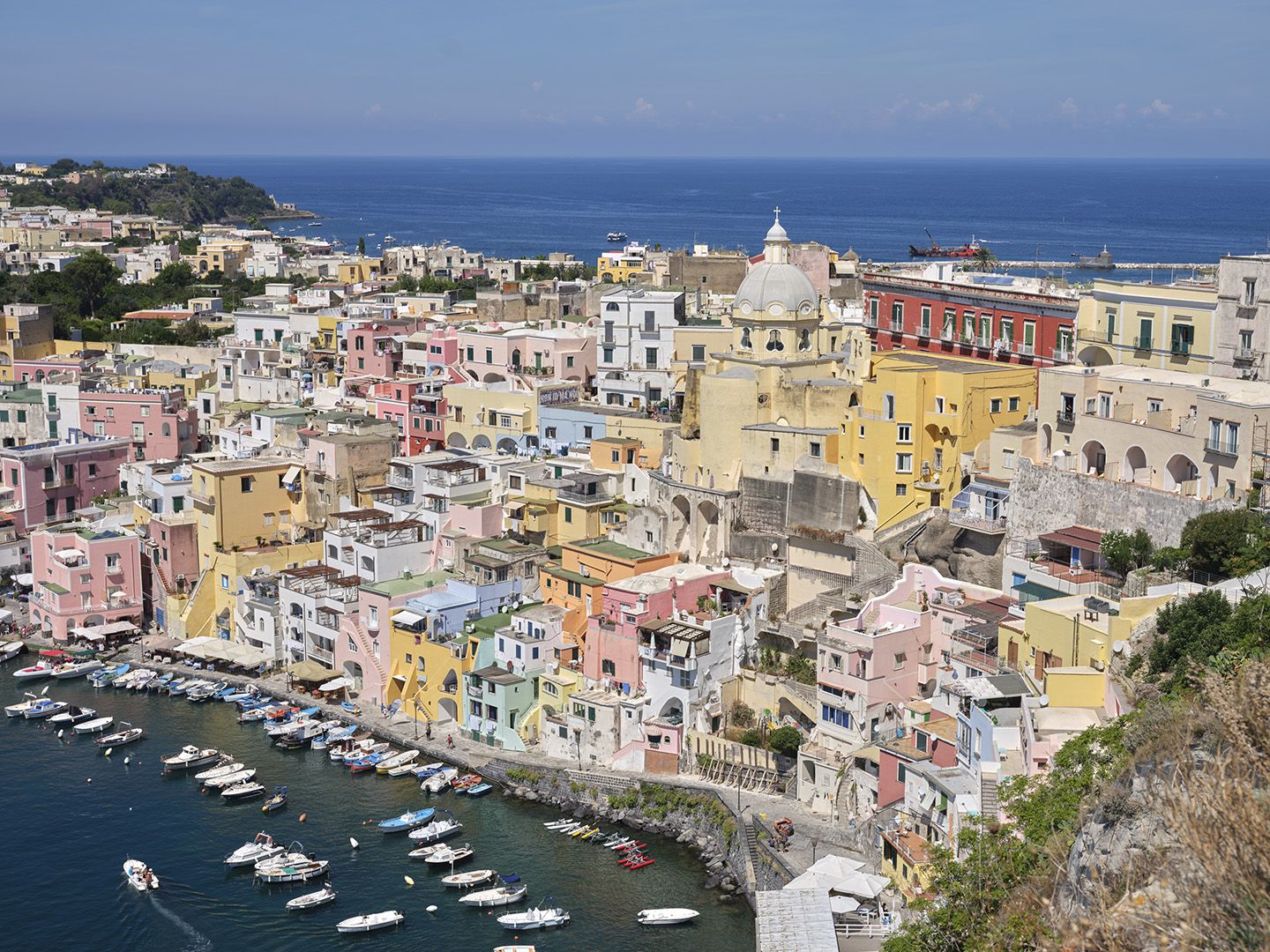
One Reply to “Procida”